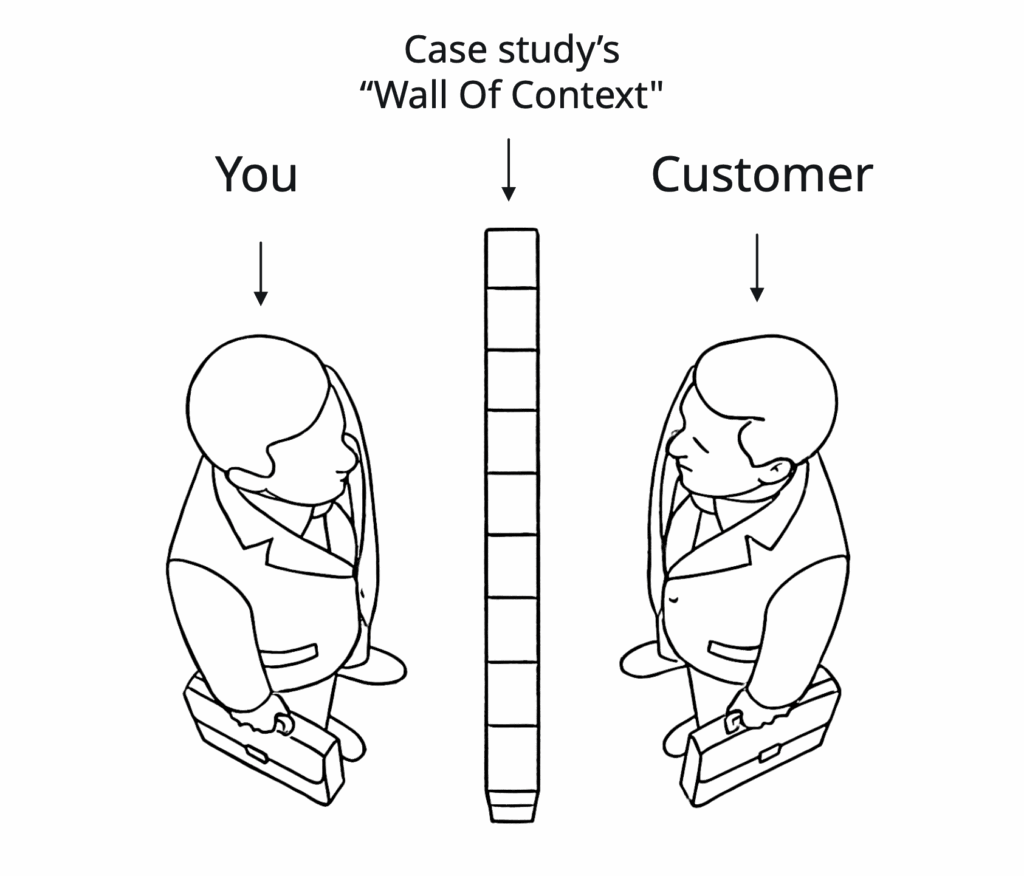By far the single most common problem I see with case studies is what I call the “Wall Of Context.”
The Wall Of Context obstructs your connection with your potential client and reduces your case study’s effectiveness as a sales tool.
You know the Wall Of Context: It’s the beginning of your case study, which describes the client you were working with in the past. For example, “Company XYZ is a fintech software developer, has $100 million of annual revenue, 100 employees, and recently completed their Series D.”
Why is the Wall of Context so bad?
Because your potential customer, when he or she picks up the case study, is thinking, “Has this person seen my problem before, can they solve it, and how do they go about it?”
And what do you do? You hit them over the head with a bunch of information about someone else.
Now, don’t feel bad. It’s a really common problem. In fact, I would say that 80% of case studies have this problem. So if you take a look at your case studies and see this problem in them too, don’t think, “I suck,” just think, “I’m like everyone else.” (Which, by the way, is still a horrible place to be, especially if you are trying to sell something.)
This problem becomes especially painful as your case study propagates throughout the organization.
Your champion is risking his or her career on you. So of course he or she is going to be willing to spend time wading through a poorly-arranged case study and trying to figure out what you’re trying to say. More at risk, more tolerance to put up with, shall we say, “sub-optimality” (that’s a polite expression of another word I’m thinking of that also begins with “s”).
But others in the organization, they’re not going to be as willing to cut you slack. And so your case study is read less, or, at best, less is retained. And your champion has to try harder to explain you to them (and keep in mind, as I’ve written previously, in a typical B2B sale there are at least three decision-makers).
It’s hard enough to get the sale in the first place, and now you’re cutting yourself off at the knees by sending an ill-equipped champion around the office to make your case for you.
Why are you making your own life harder than it needs to be?
All of the details in the Wall Of Context are good, they need to be in the case study, but the wall needs to be broken up and the details sprinkled throughout the document, not presented all at once at the beginning.

